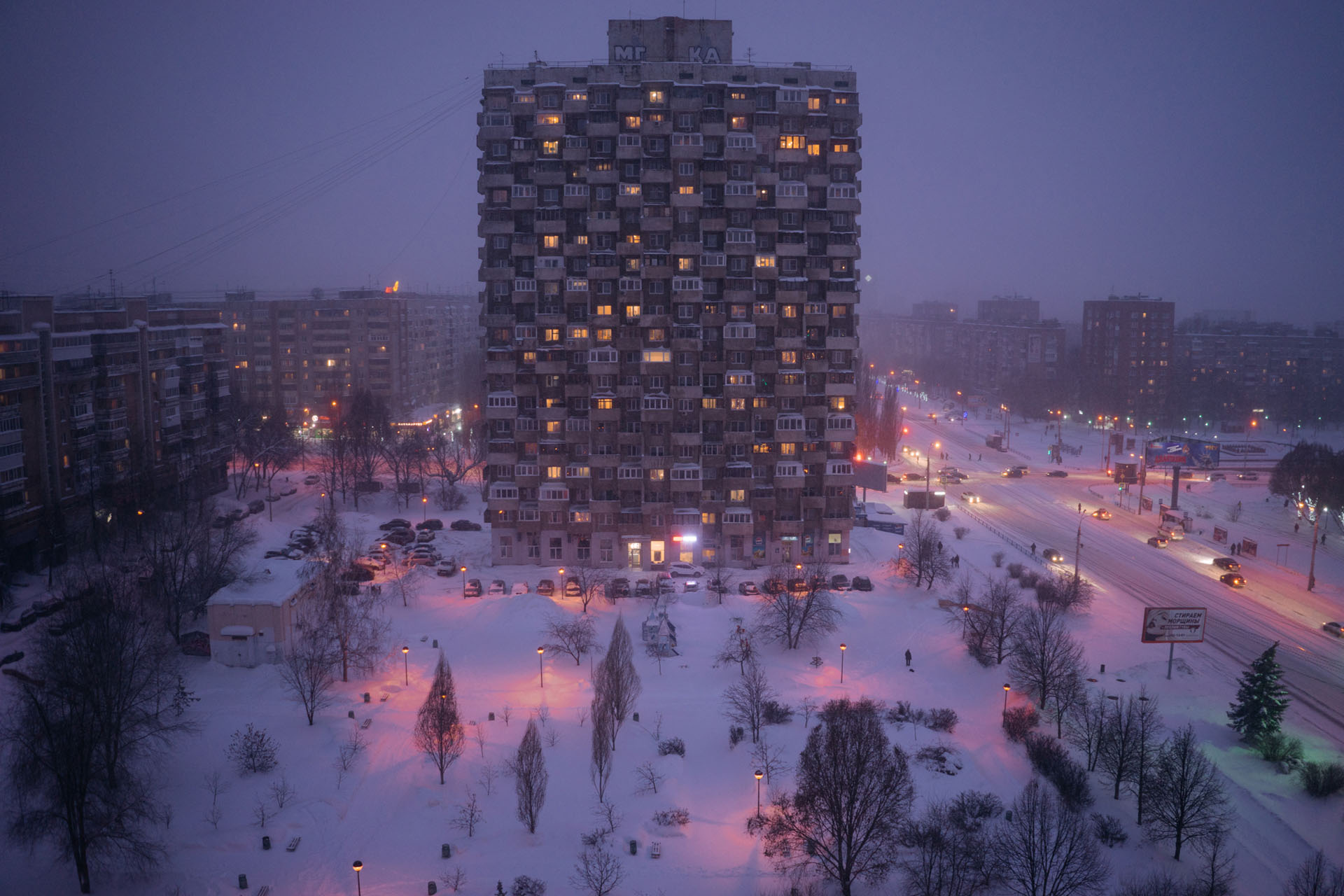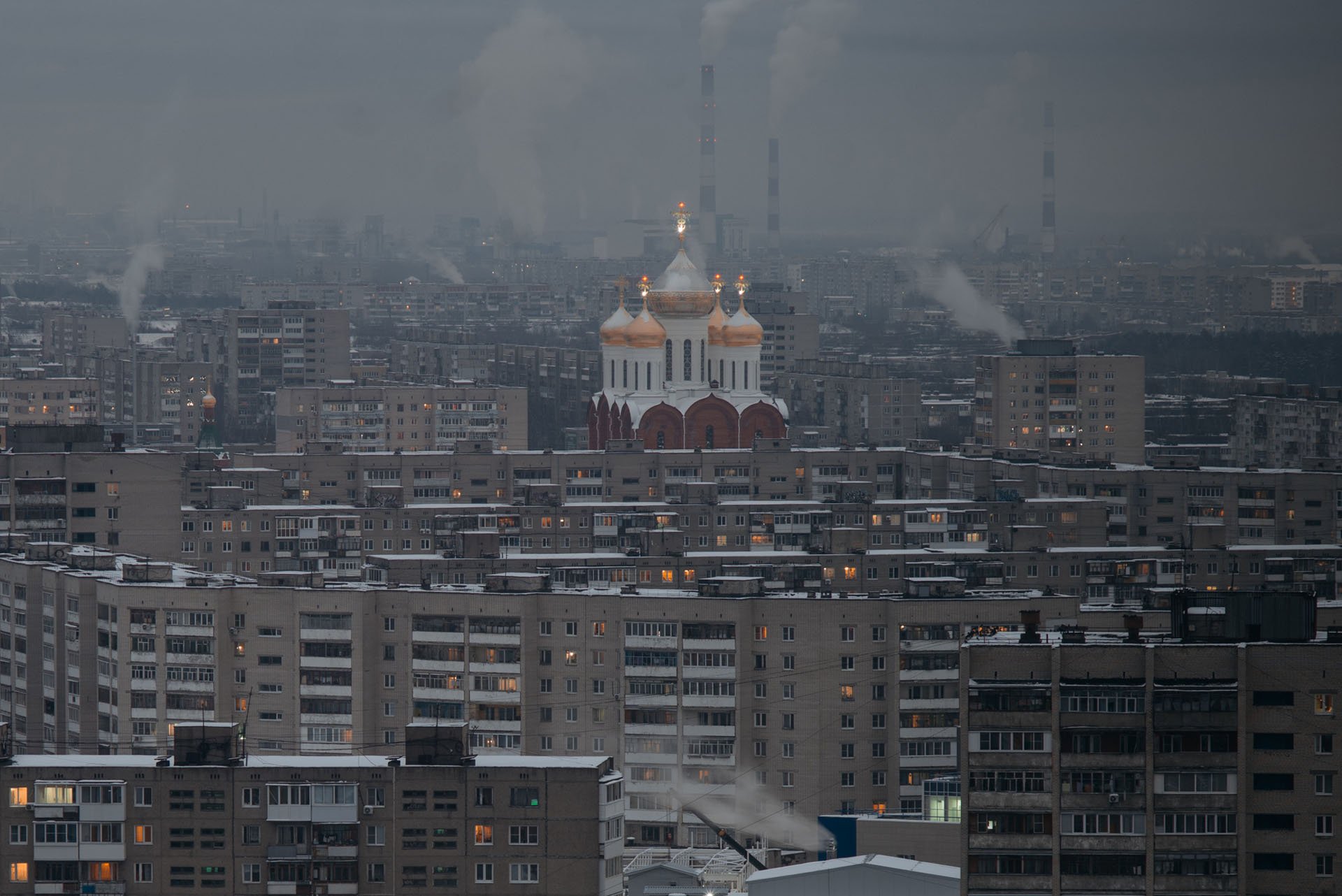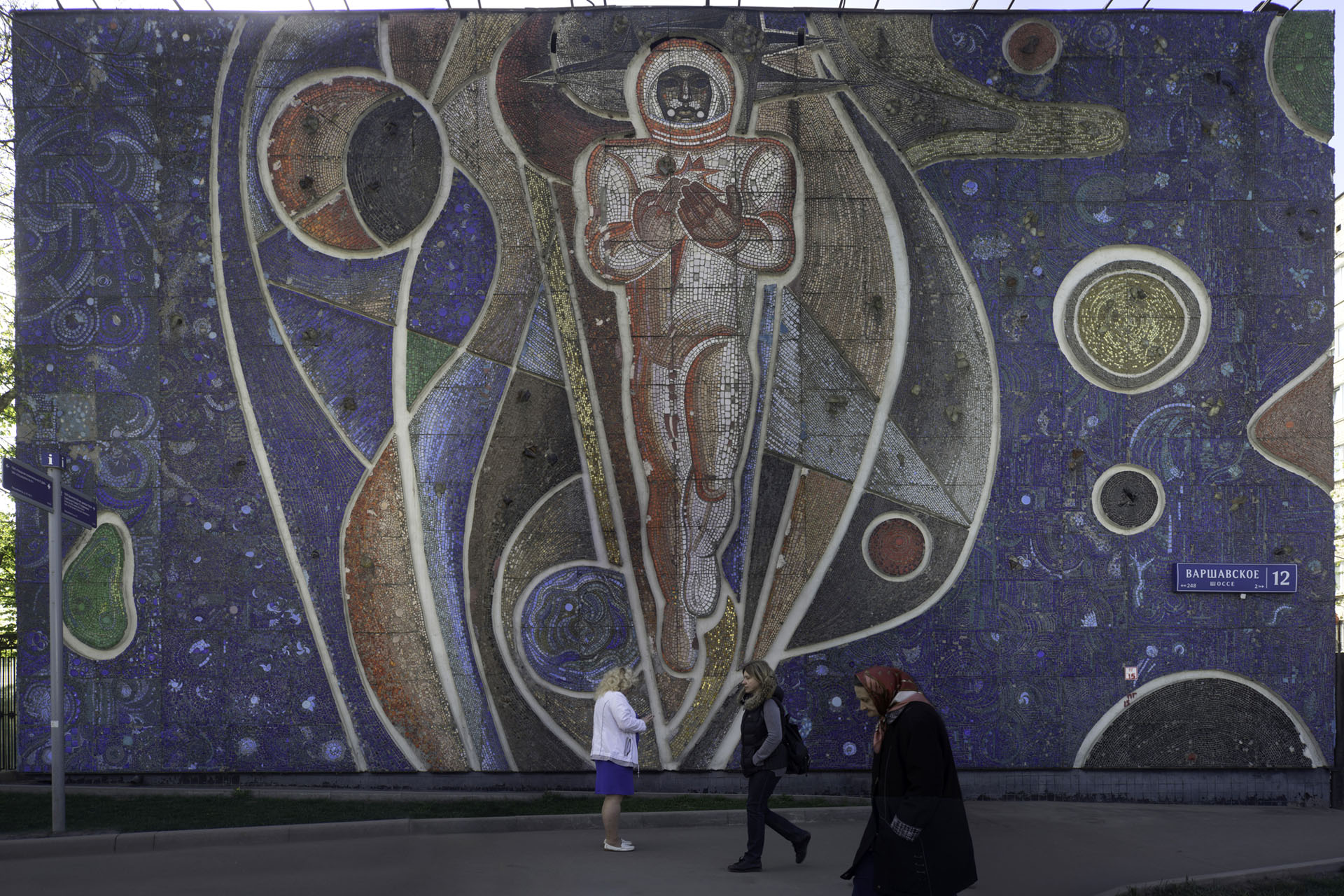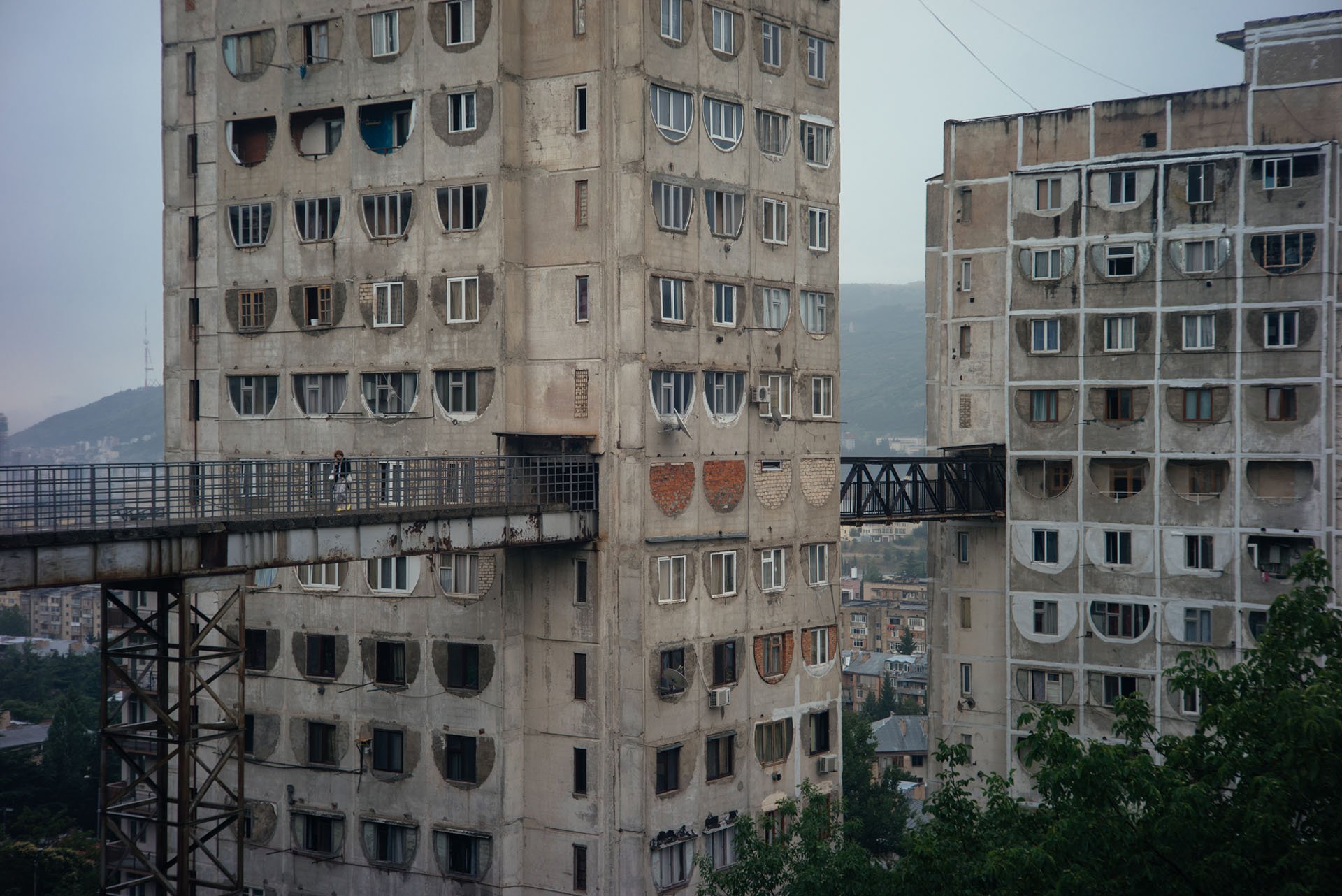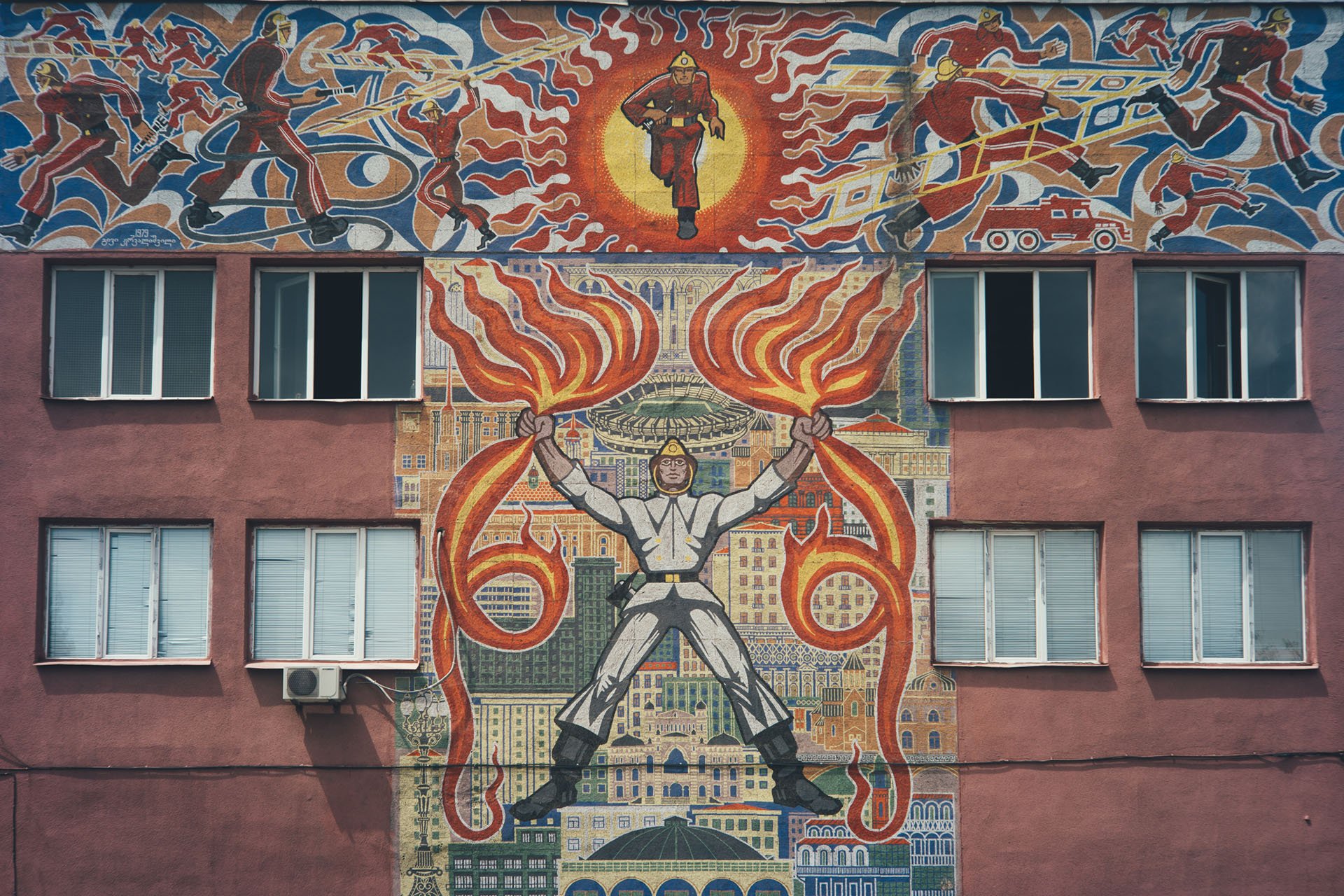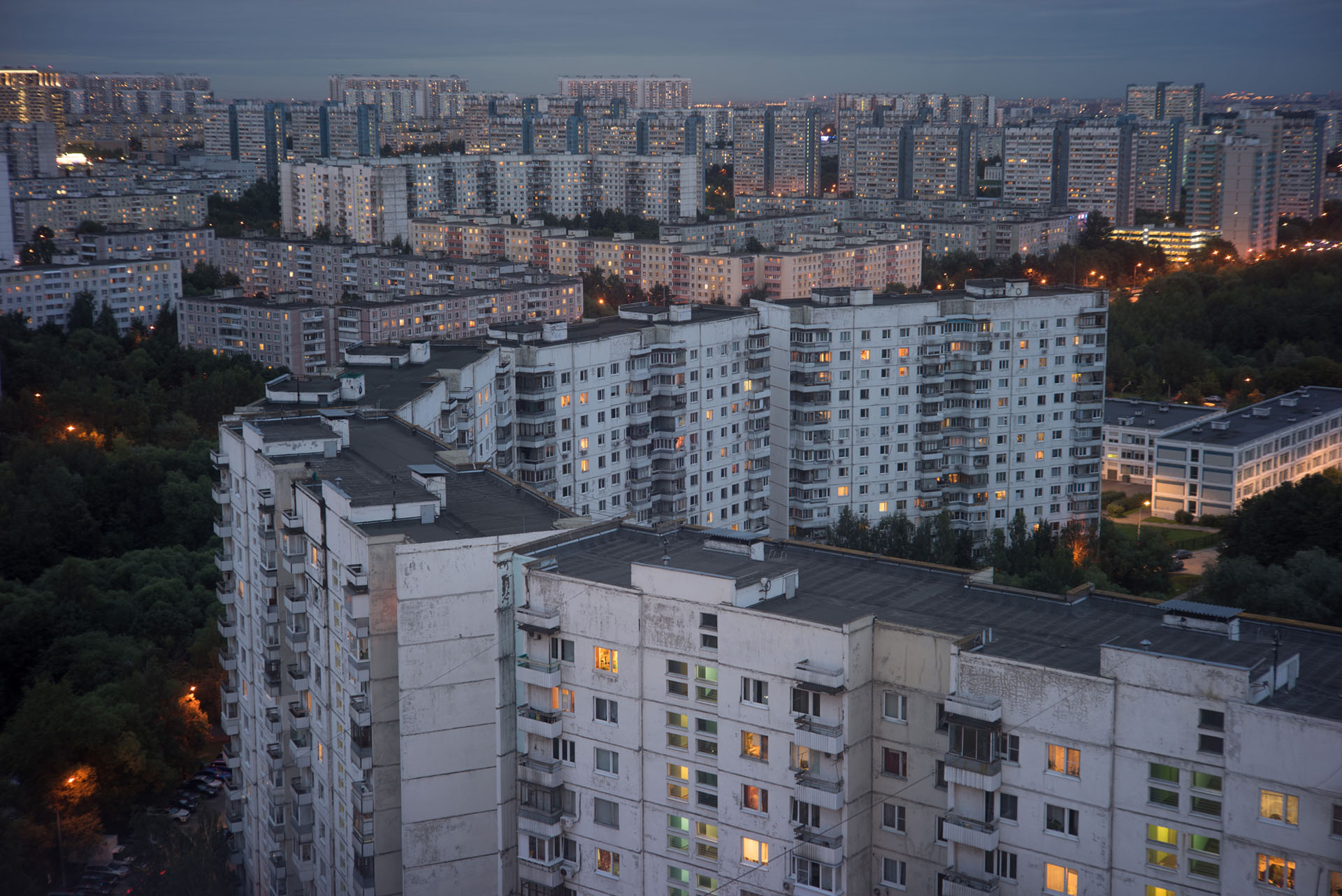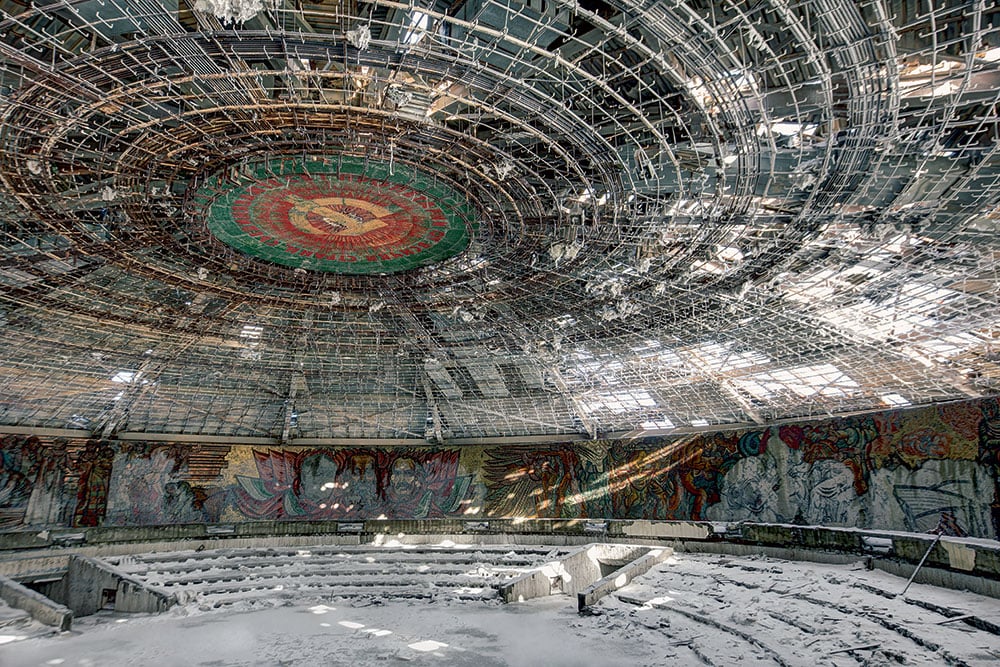Moody postcards of sprawling Soviet housing blocks photographed at ‘blue hour’
There is nothing remarkable about the ubiquitous Soviet housing blocks in Arseniy Kotov’s photographs. These buildings were replicated throughout the Soviet Union to redress the housing crisis of the 1950s. Yet, due to the very scale of mass production, mikrorayons are a mesmerising sight, standing like an elaborate sequence of dominoes that has miraculously withstood the collapse of the Soviet Union and the seismic shifts that followed. Born in 1988, Kotov was too young to experience the Soviet era: nonetheless, he has been on a mission to photograph the legacy of its built environment before these monoliths are razed for redevelopment.
The photos started their life on Instagram, under the lovable moniker @northern.friend (which boasts over 50k followers). Kotov is currently crowdfunding for his first photo book, Soviet Cities: Labour, Life & Leisure, to be published by FUEL in 2020. The standardised high-rises and cooling towers may be familiar enough to the Russian-speaking fans that make up 40 percent of his followers, but as Kotov explains, he’s lucky to have seen parts of the country that usually go unnoticed: “In just a few years, I’ve seen more cities and regions of Russia than the average Russian would see in a lifetime.”
He prefers to shoot his photos in cloudy winter weather at “blue hour,” which occurs before sunrise and after sunset. The focus, for this reason, is not just on the buildings but its inhabitants, represented by the warm glow emanating from the apartments — proof that life goes on behind their identical facades. That the majority of his followers are from the western world is still a surprise for the photographer. Kotov says it’s about time we begin to appreciate the legacy of mass housing, despite all its faults. “Not long ago people liked constructivism, and after that it was Stalinist architecture, so it’s about time socialist modernism enjoys some of the glory.”
To help fund the book you can visit Kotov’s crowdfunding page. He spoke to The Calvert Journal about the local buildings that left an impression on him and his favourite urban Instagram accounts.
Rear-front monument, Magnitogorsk
“I felt like an archeologist among ruins”
I was born in Samara, then named Kuibyshev. The urban landscape that I grew up with consisted of standardised building blocks and several industrial towers. I went to a typical kindergarten and then a typical school (named Project V-76). For a long time, I saw my surroundings as nothing special and didn’t question them. After school, I entered university; it was one of the biggest in my town, occupying around five square kilometres. All the interiors of the university were preserved in their original condition: it was decorated with beautiful monumental murals, mosaics, and drawings celebrating the glorious communist future that would never arrive.
During the last year of my studies I started to work as an engineer. It was a monstrous factory. Some 20,000 people work there now, but back then there were twice as many. During my lunch break I was excited to explore the half-abandoned parts of the factory. The workshops hadn’t changed since the 1980s and still boasted some of the best equipment of that era. In the courtyard of my block, there was a giant red metal hammer and sickle with the inscription “Glory to Labour”. Roaming the factory was a constant source of fascination for me. I felt like an archeologist among the ruins of an ancient civilisation.
“After 2005, Russia’s urban environment started to change”
When I first began taking photos, I tried out different genres and liked urban and architectural photography the most. I understood the importance of documenting Soviet architecture, because after 2005, Russia’s urban environment started to change. It started slowly, with new districts appearing on the edge of the city and high-rises cropping up in the centre. This modern architecture was not like the socialist modernism of the past. It was bright and colourful and so unlike the concrete blocks that came before. Nowadays, it is harder and harder to find untouched cityscapes from the socialist period. I want to save this part of our history, at least in my photographs.
Samara
“I usually travel with a minimum budget”
I will plan a long route to include as many sights as possible during one trip. In Russia, I usually travel with a minimum budget. I’ll hitchhike from one place to another. Then I’ll couch surf or just stay with strangers who I’ve met in smaller cities or villages. Beyond Russia, I’ve taken several trips around the Caucasus, two trips across the Baltic states, two trips around Ukraine, and one long stint in Central Asia. There are a lot of people with similar interests to mine, so I plan which buildings and monuments to visit through their experiences. But I also like to spend my spare time in the library, reading old issues of Arhitektura SSSR magazine or any other books on the theme. Sometimes, I’ll come to a city that I know nothing about, in which case I’ll try to find locations to shoot by looking at satellite maps.
“Including figures allows you to appreciate the scale”
I keep editing very minimal. I will straighten the perspective a bit so that it’s still realistic. I will play with the colours and light to make it look better, but I always prefer to keep the photos looking as natural as possible. Including figures allows you to appreciate the scale of things. I’m pleased when I capture someone at their window or a child playing near a giant war memorial. I think these moments make the photos lively.
“Instagram is so limited”
Making a book was an ambition of mine. It feels somehow more of a contribution to culture. Instagram is so limited; it doesn’t allow artists to work in different formats.
For example, all my photos are originally 2:3 and horizontal, but for Instagram I have to crop them 5:4 and make them all vertical, otherwise people won’t see anything on their smartphone displays.
My favourite accounts to follow are:
@lanasator — dedicated to Soviet ruins.
@ukranianmosaics — Soviet Ukraine monumental art.
@diminimal — minimalist buildings mainly in Moscow and other Russian cities.
@rukhina — you can’t go wrong with Soviet monumental art.
@lekon_v — documentary photography from Yakutia.
@kosmaj_project — aerial photography by my friends in Moscow.
